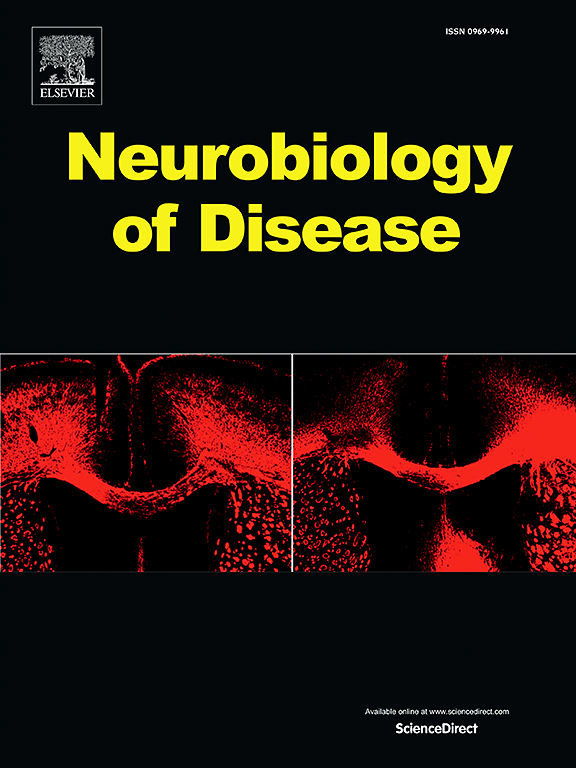Frequency-coded spatiotemporal control of telencephalic ictal oscillations and inter-cortical coherence by thalamus
IF 5.6
2区 医学
Q1 NEUROSCIENCES
引用次数: 0
Abstract
Many epileptic seizures (hereafter abbreviated as seizures) are characterized by overly synchronized oscillating activities in the thalamocortical system. Despite dense reciprocal innervation between cortex and thalamus, the exact role of thalamus in ictogenesis (e.g. as a passive associate, lenient modulator, or indispensable controller) has been unsettled. We found that either electrical or chemical ictogenic stimulation of basolateral amygdala (BLA) induces augmentation of δ-frequency local field potential (LFP) oscillations in situ. In contrast, the thalamic mediodorsal nucleus (MD), which is reciprocally connected with BLA, responds with mixed θ-α and δ oscillations at first. MD may then be entrained more and more into the latter, leading to augmented δ oscillations as well as δ coherence in the thalamocortical system and maximal behavioral seizures. Inhibition of MD with topical tetrodotoxin dissipates the coherent δ augmentation and decreases multi-unit spikes in BLA and other telencephalic areas, suggesting critical involvement of MD in the inter-cortical communication and focal ictogenesis. Systemic application of proconvulsant pentylenentetrazol could induce interchanging periods of δ and θ-α augmentation in MD, at which periods concomitant electrical stimulation of BLA would be much more and less likely to induce seizures, respectively. The mechanism underlying thalamic δ entrainment in telencephalic ictogenesis and “θ-α antagonism” may involve local GABA-glutamate interactions and the requirement of cortical glutamatergic input for the generation of thalamic burst discharges (“relay bursts"). Thalamus thus assumes a critical control of the temporal pace and spatial scale of telencephalic oscillations, with a specific but well adaptable order of frequency and amplitude modulation.
丘脑对端脑头振荡和皮质间相干的频率编码时空控制。
许多癫痫发作(以下简称癫痫发作)的特征是丘脑皮质系统中过度同步的振荡活动。尽管皮层和丘脑之间有密集的互反神经支配,但丘脑在ictogenesis中的确切作用(例如,作为被动关联,宽松调节或不可或缺的控制器)尚未确定。我们发现,无论是电刺激还是化学致乳刺激,基底外侧杏仁核(BLA)都会诱发原位δ频率局部场电位(LFP)振荡的增强。相反,与BLA相互连接的丘脑中腰核(MD)首先以混合θ-α和δ振荡响应。MD可能会越来越多地进入后者,导致丘脑皮质系统的δ振荡和δ相干性增强和最大行为癫痫发作。外用河豚毒素抑制MD可消除相干δ增强,减少BLA和其他远脑区域的多单位峰值,表明MD在皮质间通讯和局灶性icogenesis中起关键作用。全身应用惊厥前药戊四唑可诱导MD δ和θ-α增强的交替期,在此交替期,同时电刺激BLA诱发癫痫发作的可能性分别大大增加和减少。端脑ictogenesis和θ-α拮抗的丘脑δ携带机制可能涉及局部gaba -谷氨酸相互作用和皮层谷氨酸能输入对丘脑突发放电(“relay bursts”)产生的要求。因此,丘脑对端脑振荡的时间节奏和空间尺度具有关键的控制作用,具有特定但适应性良好的频率和振幅调制顺序。
本文章由计算机程序翻译,如有差异,请以英文原文为准。
求助全文
约1分钟内获得全文
求助全文
来源期刊

Neurobiology of Disease
医学-神经科学
CiteScore
11.20
自引率
3.30%
发文量
270
审稿时长
76 days
期刊介绍:
Neurobiology of Disease is a major international journal at the interface between basic and clinical neuroscience. The journal provides a forum for the publication of top quality research papers on: molecular and cellular definitions of disease mechanisms, the neural systems and underpinning behavioral disorders, the genetics of inherited neurological and psychiatric diseases, nervous system aging, and findings relevant to the development of new therapies.
 求助内容:
求助内容: 应助结果提醒方式:
应助结果提醒方式:


